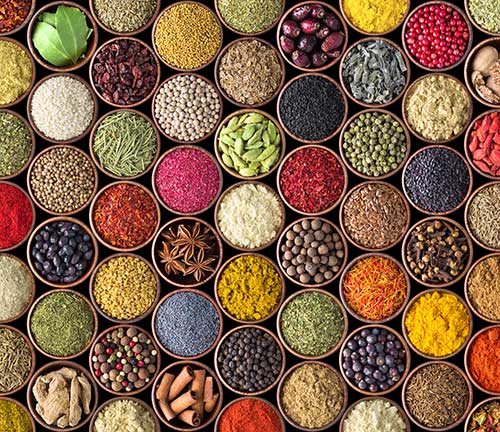“Flavour” – The Password to the Gastronomical Universe
The word “flavour” immediately brings to our memory our most favourite food item. Most often, flavour is used interchangeably with taste. But actually, it is not only the taste of a dish that gives its flavours. Flavour is a sensation that is a combination of taste and smell sensations. The smell and taste of food, its colour, texture and temperature and past experiences (memory sense) also contribute to what is known as flavours of food. This combination of factors may make a particular food delicious/unpleasant or downright disgusting. Taste and smell are special senses while flavour is an experience. Sense of taste and smell are often associated with strong emotions and memories.

Let us now see in brief the science behind the taste and smell sensations. Taste sensation has aided us in testing the food that we are consuming, so it is a matter of survival and evolution. There are five basic tastes – sweet, sour, bitter, salty and umami or savoury. There are innumerable specialised cells for perception of taste. These are called taste buds or papillae. They are sensory receptor cells which are stimulated when the substances are dissolved in liquid and react with them chemically.
This stimulus is perceived and signals are then transmitted to the brain. There are about 10,000 taste buds situated on the upper surface of the tongue. Some of them are also spread over the surface of the soft palate, epiglottis, uvula, larynx and upper oesophagus. On the tongue, they can be seen as small bumps by the naked eye. Basic taste sensation is perceived by them. Temperature is detected by different cells (thermoreceptors) in the mouth.
Dysgeusia is an alteration or distortion in taste perception. A complete loss of taste is extremely rare and termed medically as ageusia and a decreased sensation of taste is called hypogeusia.
Disorders of taste sensation can be a side-effect of certain treatments or medications. Sometimes, it can be a result of certain vitamin or mineral deficiencies. It can also be a symptom of certain hormone disorders or nervous system diseases. An accidental injury or surgery and infections involving the nerve that mediates our taste sensation can also lead to a decreased or absent taste perception.
Smell plays a vital role in appreciating the flavour of food. Smell perception is by the presence of specialised cells called olfactory neurons. These smell receptors are situated in a small area in the roof of our nasal cavity. Substances in the form of airborne molecules reach the nose and stimulate the olfactory neurons. These specialised nerve fibres directly connect to the brain. There are innumerable (millions) smell receptors. There are around 400 types of smell receptors while we humans can differentiate close to 10,000 odours. Smell sensation is also connected to the area in the brain that regulates emotions. So, some specific smells can trigger an immediate feeling of desire/fear and also evoke a strong memory.
It is the sense of smell that makes us enjoy our favourite food. When we chew our food, some substances are vaporised and from the back of the mouth, they enter the nose from behind, thus stimulating the smell receptors. Without smell, food can taste bland and can lack flavour. Odours also help as a warning system to alert us of some dangers like spoilt food or LPG gas leak. Smell disorders can have a negative impact on the quality of our life.
Medically, hyposmia is a term used for decreased smell sensation and anosmia is a word that indicates absence of smell perception. Parosmia means a change in the normal perception of odour. If a person perceives a smell in the absence of it, then it is termed as phantosmia. Disorders of smell are common in elderly patients. Many a times, simple infections of the nose and sinuses or polyps can lead to decreased smell appreciation. Other reasons for smell abnormalities are smoking, inhalation of irritant solvents/chemicals, head injury, certain medications, hormone imbalance and diseases involving the nervous system.
So, our sensory perception of food requires inputs in many ways. Smell and taste help us appreciate the subtleties of flavour. Flavour is a multimodal facet of food; the nose and tongue help us to experience and enjoy it.

Dr. Preethi. P
Consultant – ENT, Head and Neck Surgery
Kauvery Hospital Chennai


COMMENTS